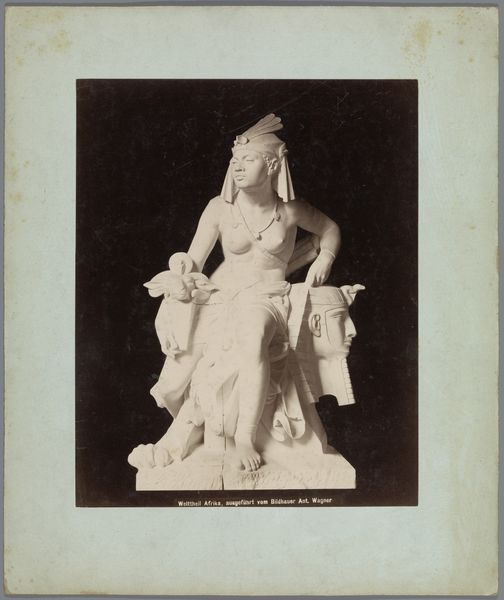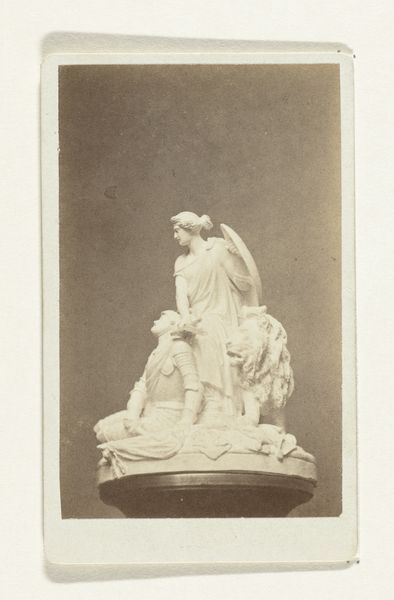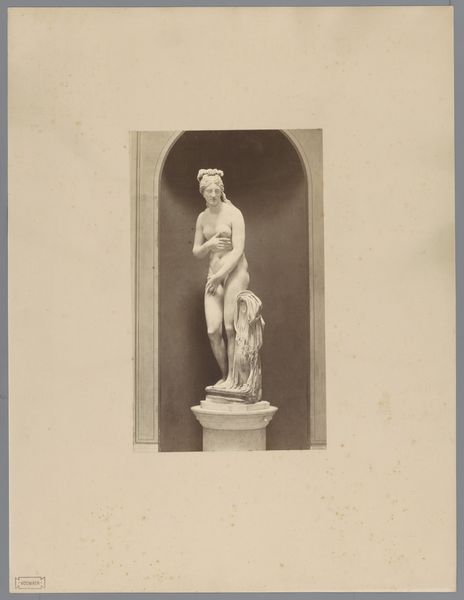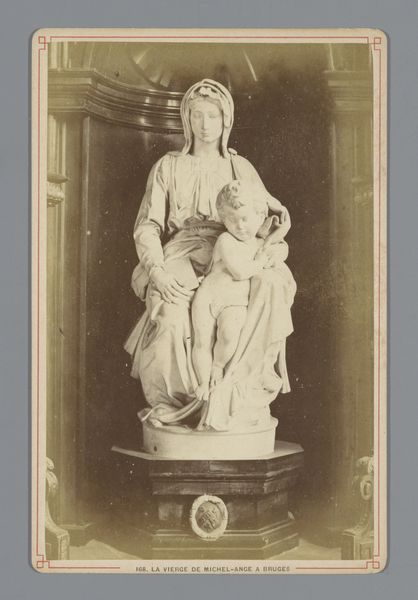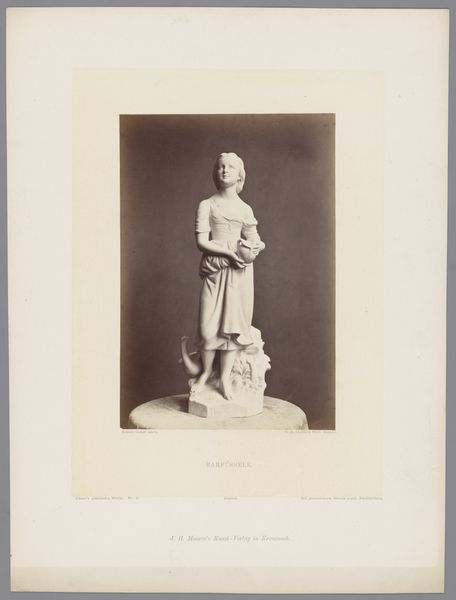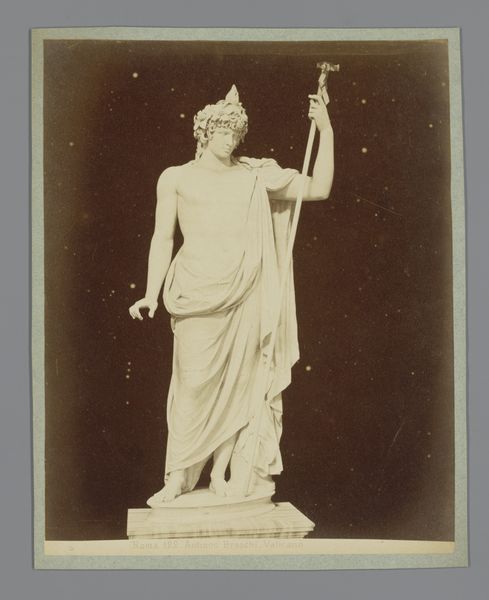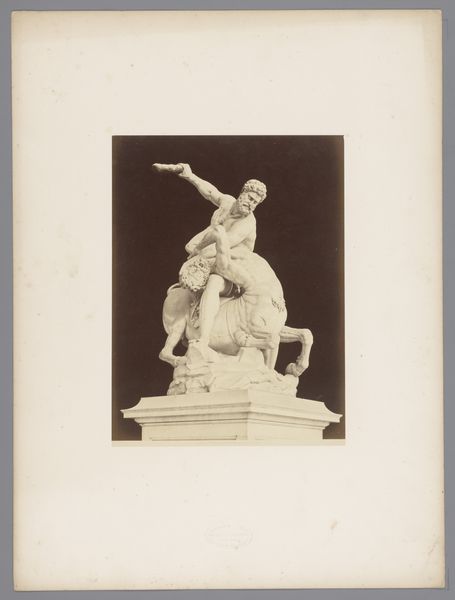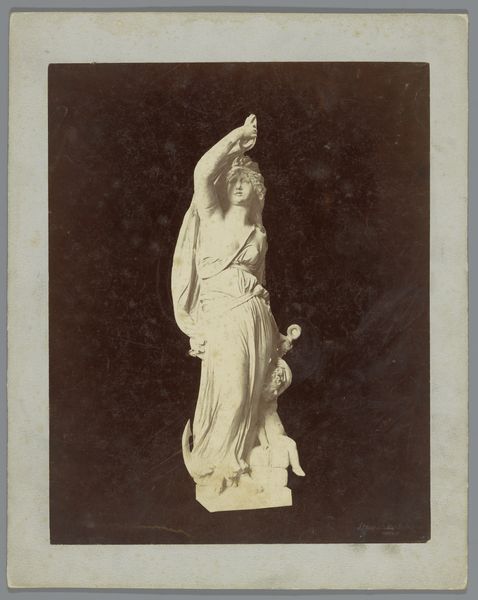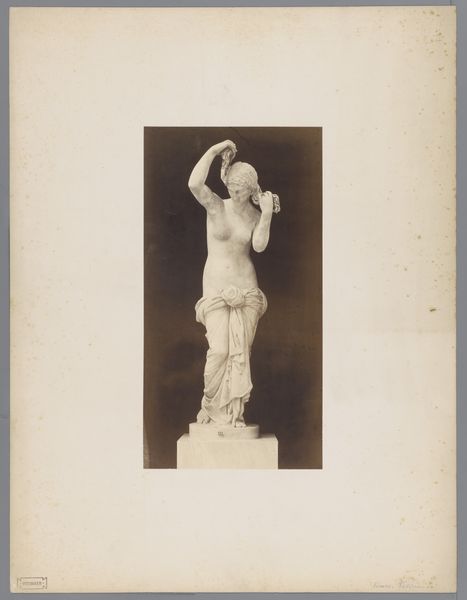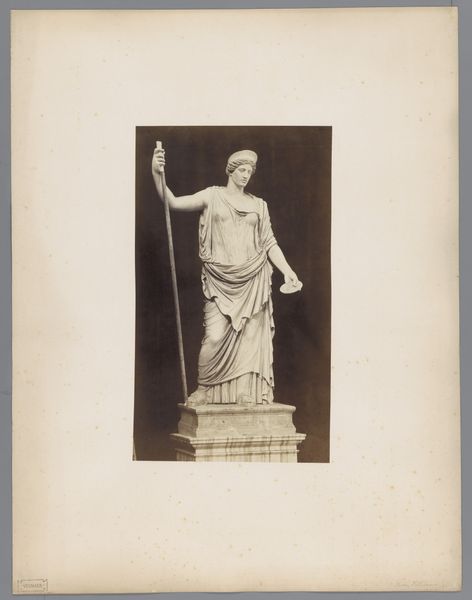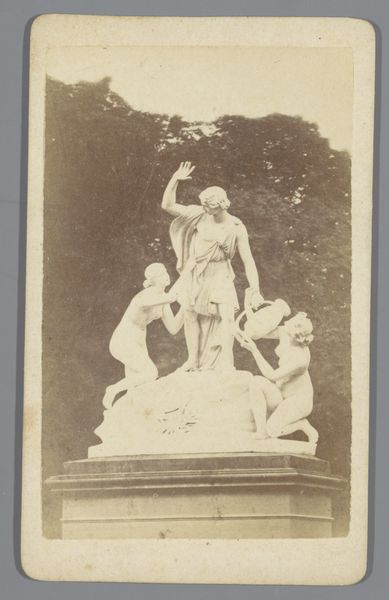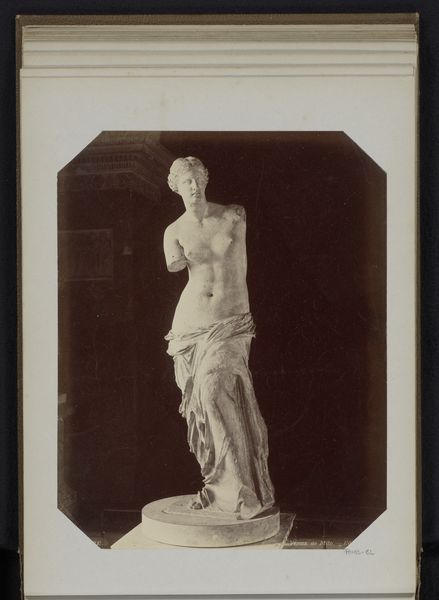
Beeld van (vermoedelijk) Terpsichore met een lier en een fluitend kindfiguur c. 1875 - 1900
0:00
0:00
photography, sculpture
#
statue
#
neoclassicism
#
classical-realism
#
photography
#
child
#
sculpture
#
statue
Dimensions: height 253 mm, width 201 mm
Copyright: Rijks Museum: Open Domain
Curator: This photograph presents a sculpture, likely from the period between 1875 and 1900, titled "Beeld van (vermoedelijk) Terpsichore met een lier en een fluitend kindfiguur" which translates to "Statue of (presumably) Terpsichore with a lyre and a whistling child figure." Editor: My first impression is one of serene elegance. The whiteness of the sculpture against the dark background is striking. It feels very much like a classical tableau vivant frozen in time. Curator: Indeed. Considering the classical-realism style and the probable identification of the figure as Terpsichore, the muse of dance and chorus, what significance do you ascribe to her being depicted with the lyre and the child? Editor: Well, the lyre is, of course, a potent symbol of music and harmony, and to have a child figure seemingly 'whistling' introduces a playful, almost innocent element. The pairing suggests a cultivated pursuit of the arts tempered by a natural, perhaps even untutored expression. Perhaps it alludes to inspiration or the origins of creativity. Curator: Interesting, because to me, this representation speaks of social production and refinement. Notice the specific way Terpsichore holds the lyre. The material—probably marble—needed quarrying, shaping, and polishing by skilled labor. The sculpture itself may have served a specific patron, reinforcing social standing or political ideals. The clothing, the details... they tell of access and consumption, even celebration, which would probably leave the majority of the people behind. Editor: That's a valid interpretation. The clean lines certainly evoke Neoclassicism, with its references to Roman aesthetics used to symbolize authority. I read something different though in the juxtaposition of youth and experience, and I tend to see cultural continuity expressed in art as a carrier of knowledge, ideals and memories. Curator: Perhaps. But what resonates is the context of its making, and who benefited from such depictions of refinement. How many anonymous hands were involved in producing the raw materials, tools, transportation of them... the human toil necessary? Editor: It’s fascinating how a single piece can provoke such different interpretations. It really demonstrates that these symbols speak to many cultural aspects at once. Curator: Indeed, art doesn’t exist in a vacuum. The choices involved—materials, scale, subject—are often tied to power, status, and production, reflecting the economic reality of its time. Editor: Agreed. And by reflecting on that reality, and by carefully looking at all those layers, we’re not just observing a statue; we’re deciphering echoes of enduring meanings and production methods throughout history.
Comments
No comments
Be the first to comment and join the conversation on the ultimate creative platform.
